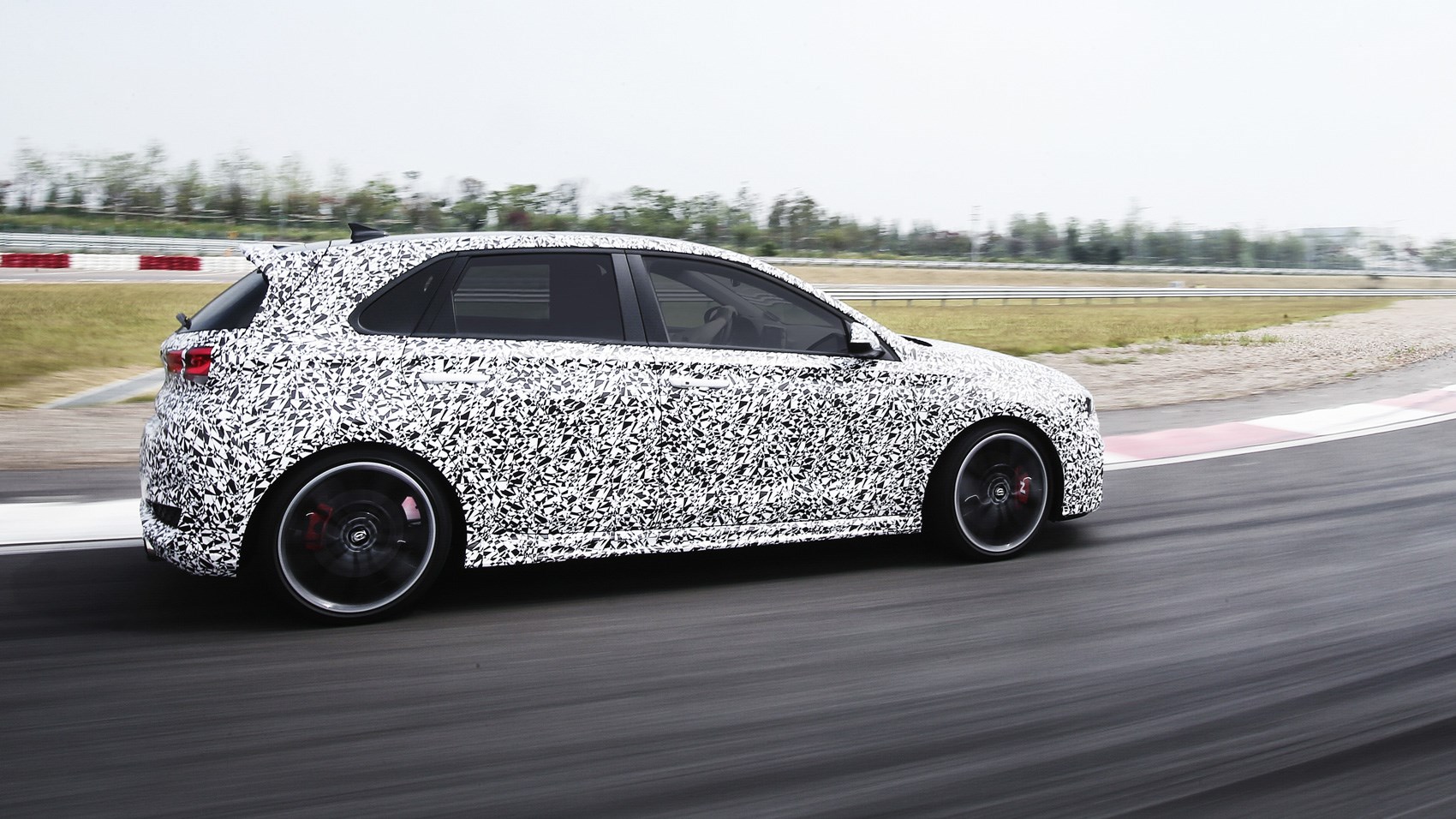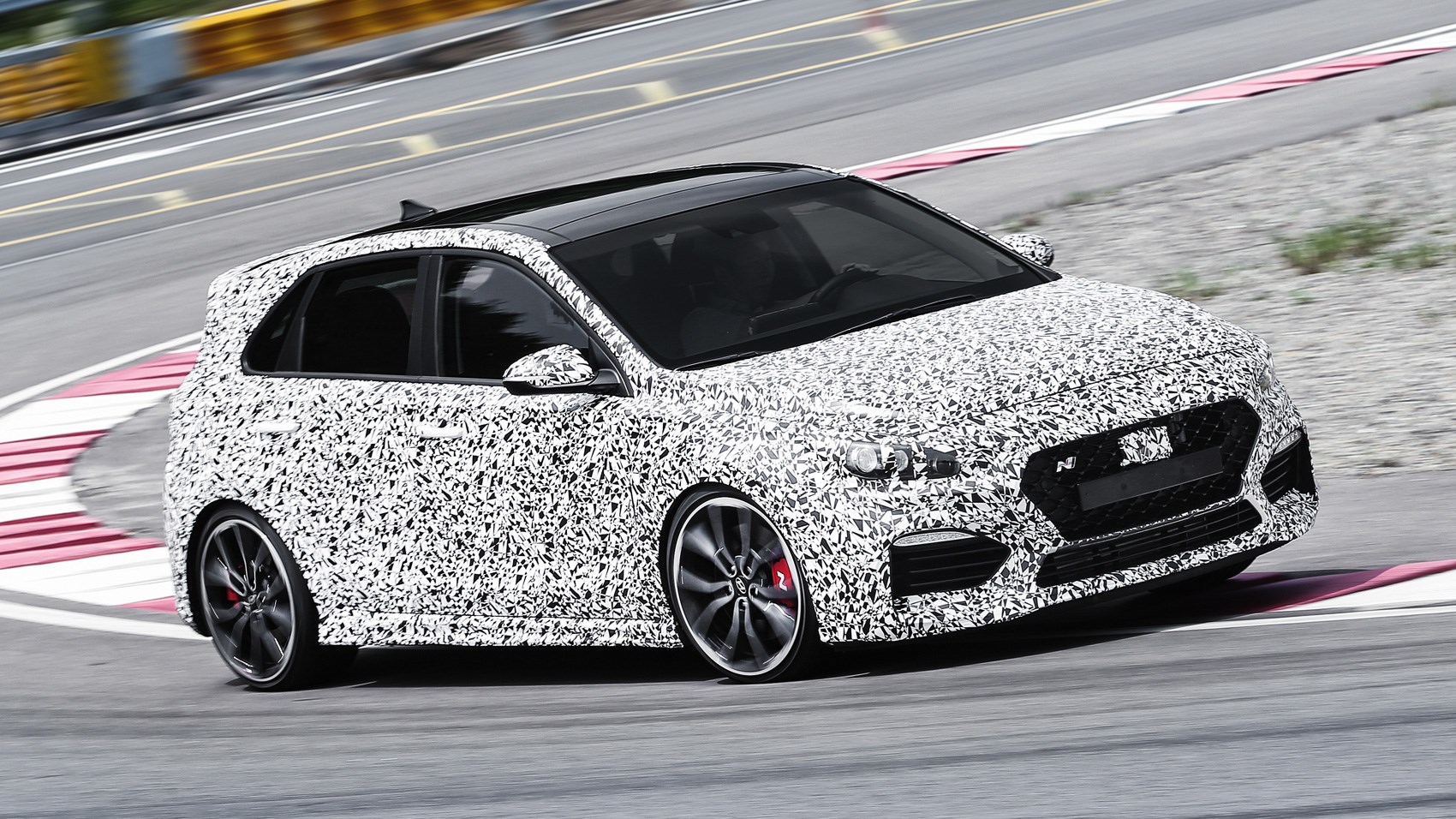► First ‘N’ performance car from Hyundai
► Practical hatch aims for Golf GTI and co.
► We drive prototypes in Germany and Korea
Hyundai is taking this seriously. The i30 N hot hatch, the first car to be developed under its new N brand, will take on a fiercely contested part of the performance car market that not only sells in huge numbers here in the UK, but also across Europe.
It’s wheeled out the big guns too, with ex-BMW M Division right-hand man Albert Biermann in charge of bringing the i30 N to production.
Various pre-production mules have faced more than 480 laps of the Nurburgring in Germany, which Hyundai says is the equivalent of travelling more than 90,000 miles on normal roads. In these conditions, the cars have also been driven at 90-95% – they’re not messing around.

Why ‘N’?
That letter hasn’t just been plucked out of the air. The ‘N’ stands for Namyang – Hyundai’s Korean R&D base and proving ground in South Korea. It also, conveniently, stands for Nurburgring, where the i30 N has been relentlessly tested at the company’s European Tech Centre.
More tenuously, according to Hyundai the letter also resembles a chicane in shape – a type of corner that, given all that development, the car should have no trouble navigating.
What are the numbers?
Performance details are yet to be confirmed, but our chat with engineers revealed the i30 N will come in two states of tune – like many other hot hatches on sale now – but it’s as yet unclear if we’ll be taking the lower-powered model here in the UK.
Things kick off with a 247bhp 2.0-litre turbocharged petrol engine, while the Performance Pack variant that we drove pushes out around 276bhp and 295lb ft of torque.

Get to the good bit…
We originally tested the car on the twisty, sweeping, fast roads around the Nurburgring in the Eifel mountains with one of the car’s senior engineers, and first impressions were very positive.
The i30 comes with a choice of driving modes – Eco, Comfort, Sport and N – while an N Custom mode allows you to tweak the various maps to your personal preferences – allowing you to defeat the automatic throttle blipping, or turn off its exhaust crack, which Hyundai calls its ‘after burn’.
We spent most of our drive in Sport mode, and even in pre-production form the i30 felt remarkably complete. The steering has excellent weight, the throttle is eager but not jittery, and power delivery is smooth right across the rev range. Come off the gas at more than 5000rpm and the N’s exhaust will pop, crackle and bang like a Ford Focus RS.
There’s some artificial noise piped into the cabin, but it doesn’t sound too synthetic, so we’ll forgive it. Otherwise, the soundtrack emanating from beneath the bonnet is quite undramatic.
On the road, you’ll struggle to get this car to feel like it’s losing composure. The grip from the Pirelli tyres – specially developed for the car – is seriously impressive and overall it feels an accessible, unintimidating car to drive.
It’s got more than a whiff of Golf GTI about the way it behaves on the road, and how it performs as an everyday hatch, which gives you a clue to which car Hyundai’s N engineering team have benchmarked this against the most.

And on the track?
Hyundai’s engineers say N mode is best left for track driving. Albert Biermann told us, ‘the ambition for this car is to work as a track day car without modification, and work perfectly well on the road. I don’t think this car will need the upgrades that you see other manufacturers offering – it’s perfect for the track as it is.’
On the basis of this drive, we’d agree. When in N mode, throttle response and the electronic dampers are both sharpened considerably. Assistance from the EPAS system is reduced, sharpening feel, too. Would you want to use it on the road like that? It’s hard to say – but unless it’s a very smooth road, N mode probably is uncompromisingly hard.
At Hyundai’s test track in Namyang, which has been designed to replicate the forest section of the Nurburgring Nordschleife, the i30 N comes into its own. Lean into slow corners at speed, and the turn-in grip is phenomenal.
Yes, you can make it understeer on entry, but that would be your choice – and if you find yourself in that situation, simply give it gobs of throttle, and the electronic diff allows the front end to bite more effectively. Not as effectively as the wonderful Torsen set-up on the Peugeot 308 GTI, but more than a match for its electronic rivals. And it’s more communicative than a Volkswagen Golf GTI.
Higher-speed corners also clearly show great stability, too. Under compression and decompression on undulating curves, body control is excellent, and it doesn’t get fooled out by sudden weight transference. It feels unflappable, allowing you really lean on it – and the steering, which is lively and full of feel, really inspires confidence in you to do it.
So, yes, this car works really well on track.
When does the Hyundai i30 N go on sale?
The finished article will be shown in July 2017, and launched towards the end of the year in October. Customers should be able to get their hands on it shortly after.
Flicking through the driving modes via buttons on the steering wheel shows an image of the front of the car on the large infotainment screen. While we weren’t allowed to picture it, I can confirm the front-end of the car looks suitably aggressive – both next to the standard i30 and its competition.
Verdict
The team behind N is a young one – its Nurburgring test centre was only built in 2011 – and most of the engineers have joined in the last two years, but that doesn’t seem to have made a difference. It’s impressive that this is the first product from the team, so mature and well-set up does it feel.
Our pre-production drives on road and track show that the i30 N could well be at the sharp end of the hot hatch grid when it hits showrooms, blending strong performance, tidy yet involving handling, and a bit of excitement. Biermann won’t be drawn on price. ‘It’s a car that will provide many smiles per pound,’ he says. Expect it to come in at very close to £25k in 247bhp form.
Looks like those hundreds of laps of the Nurburgring, and many thousands of miles on the challenging roads around it may have paid off. But the real test will come when it faces its rivals here in the UK.